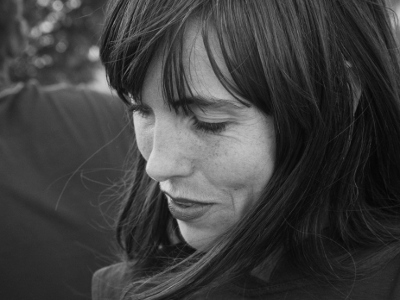Bio
Sigurbjörg Þrastardóttir was born on August 27, 1973 in Akranes in West Iceland. She graduated with a B.A. in comparative literataure from the University of Iceland in 1997 and a degree in journalism and mass communication from the same university in 1998. After graduating she worked for a number of years at the newspaper Morgunblaðið, among other things as a columnist for Lesbók, a weekly cultural supplement.
Sigurbjörg's first book, the poetry collection Blálogaland (Land of Blue Flames), was published in 1999 and since then she has published further poetry, prose and plays. Also two novels: Sólar saga (The Story of Sól) – which won the Tómas Guðmundsson Literature Award when it was published in 2002 – and Stekk (Jump) in 2012. Sigurbjörg has also won awards for her poetry: Hnattflug (Circumnavigation) was chosen as the best book of poetry by the staff of Icelandic bookstores in 2000; Blysfarir (Torching) received the Fjöruverðlaunin women´s literature award in 2008; and Brúður (Bride) was nominated for the DV cultural award in 2010. Sigurbjörg´s poetry has been translated into twelve languages in conjunction with various literary conferences, poetry festivals and anthology publications across Europe. Sigurbjörg cooperated with four other Icelandic authors and five Polish photographers on the book project IS(not), she has worked with the Metropoetica group on various projects, and has also written songlyrics for Icelandic musicians. She is one of the so called Grafarvogur-poets, calling themselves by the Reykjavík suburb that is their home, and had a poem in their joint poetry-exhibition in September 2002. Sigurbjörg was named the official poet of the Reykjavík City Library in January and February of 2003, the poet of the magazine Skírnir in fall of 2001 and served as an artist in residence at Villa Concordia in Bamberg, Germany, in the winter of 2011-12.
Sigurbjörg Þrastardóttir lives in Reykjavík.
Publisher: JPV-útgáfa.
From the Author
Emergency Poetry
Sometimes I walk uphill and collect poems from the mountain spring carry them home in two buckets on a branch that I balance on my shoulders turn back to the chores for a while but as soon as the drought becomes unbearable I grab an old ladle my grandmother left me and pour over me the flow of words from the buckets.
There is something physical in the obsession of writing poetry. At least I cannot find any other explanation for my writings than the one visible in the lines above. I wrote them a few years ago and keep them in a good place. In a poem you can say so many things difficult to express by other means (for example theories about why people write) and best to keep it at that.
I hope the mountain spring will never become dry.
When it comes to longer texts, it’s a different case – although not altogether. The fountain is the same but the journey is longer, sometimes through worlds that are quite foreign. But since the poems were described with a poem, it is fitting to describe the stories with a story:
When the tunnel under the fjord Hvalfjörður was opened on July 11, 1998, it was decided that there should be a public run in the tunnel before opening it to traffic for the first time. This was the day after the ferry to Akranes was permanently shut down and the focus was thus solely on this mysterious tunnel that had been constructed with nothing less than explosions underneath the bottom of the sea. The day before the run, I got the idea of joining the fun-runners, dug out some old sneakers, signed up and even got a t-shirt with a special logo to use for the run. I was by no means in physical shape for any challenge – could at the most cope with an evening stroll around my neighbourhood – but as I had never seen the path to be run I didn’t know what was ahead of me. No one had seen the inside of the tunnel before. And not least for this reason the whole thing excited me so.
We took a bus from Akranes around Hvalfjörður, the last time for many to drive that way. At the due time runners, cyclists and roller-bladers took their positions by the tunnel opening on the south side and started warming up. While doing that, a well dressed man held the opening speech and weaved into it some words of warning; the tunnel was longer than many people would imagine ... and so on, but people still kept warming up and smiled to one another. Then the gun went off.
The tunnel was spectacular. A bit dark while the pupils were adjusting, but wide and well constructed. The path went downhill and I started running right away, even if I had reminded myself earlier to use my sense and walk briskly in order not to give up. But no, I ran and ran, almost felt I was floating in the air on my air-padded shoes, and I didn’t care in the least how many people were in front of me and how many behind me, I was at my speed and I was having fun.
I ran until an unexpected stitch appeared in my side. Sadly, that happened only short into the run. I then switched to a brisk walk, still going downhill and I tried not to think about how far under the sea level I was. The stitch became milder but I could still feel it. I walked and walked. When I suspected that now I must be about to encounter the hill that would take me up to the other side, I saw a sign showing the distance I had left behind. It said: 1.5 km. I grabbed my painful side and stopped breathing for a moment. The tunnel is 5.8 km long.
I collected myself and started running again, breathing as softly as I could manage and took in the view, the lights, the fans, the partly man-made walls, the road, the roadsides, the emergency telephones. Many people were lagging behind, but others were also out of sight ahead of me. And all of a sudden, I started having fun again. This was in fact a wonderful adventure; to be able to be alone with my thoughts inside the earth and to have all the time in the world at my disposal. I walked and galloped in turns, took some sprints and put my sweaty head down when the hill appeared at the north side. It was much worse than it appeared to be. Not especially steep, but looong. For a while I lost my faith again, thought I would never make it to the end, felt I would almost certainly loose my life somewhere by the roadside. But I had come too far to give up now and this hard work also paid off, since I got a medallion at the finishing line (like everyone else for that matter) and was so happy about this whole little adventure that the soreness in my muscles in the coming days was nothing but a sweet reminder about a small but important step in my life.
In retrospect, writing my first novel was exactly the same. It started as a sudden idea and if I had known what a long, and sometimes gloomy, path I would have to leave behind before getting to the finishing point, I may never have started the journey. But it was fun to be an explorer, fun to be out of breath, sweat, to even out my pace, refrain from grabbing the emergency phone. This was an experience that both toughened me and taught me – and thrilled me.
I am ready to take out the old sneakers any time. And I hope I (as well as all the others) will always find the light at the end of the tunnel.
Sigurbjörg Þrastardóttir, 2002.
Translated by Kristín Viðarsdóttir.
About the Author
“where does one ocean end and where does another take over?”
“Oh the mercy of living in such a country” claims the narrator in the poem “Laugavegur” in Sigurbjörg Þrastardóttir second book of poetry, Hnattflug [Circumnavigation; 2000], and the poem continues:
...búa með undrum alla daga ákaflega
sem það mótar mig þetta náttúrunávígi ítreka ég yfir súpunni og
nikka til erlendra starfsbræðra jájá blessaðir veriði ég hef farið
hringinn fram og til baka séð heiðargæsir í sárum svifið yfir
gjósandi grímsvötnum skoðað öskju kverkfjöll og blikandi
lónsöræfi allt þetta og miklu fleira í lit og syngjandi víðómi ó
guð varðveiti ómar ragnarsson og svo eru afnotagjöldin alls ekki há.[...live with wonders every day how much
this affects me this closeness to nature I stress over the soup and
nod to my foreign colleagues yesyes of course I have travelled
the ringroad back and forth seen wild geese without flying feathers hovered over
the erupting grímsvötn looked at askja kverkfjöll and shining
lónsöræfi all this and much more in colour and singing sound oh
god bless ómar ragnarsson and the subscription is not at all expensive.]
Ómar Ragnarsson is well known in Iceland for his nature programs on television, and the poem reminds us that the modern person not only experiences news, culture and weather through mediums of all kinds, she experiences her general surroundings, including nature itself. In this way nature becomes an image, and this brings on a different feeling for nature. Sigurbjörg’s poem illustrates a clear acknowledgement of the fact that we live in a society of images and that our ideas about nature, country and nation are conditioned by a certain image. This in itself does not have to be bad, Sigurbjörg’s poem is above all a good example of an enjoyable view of this constant creation of images. And it is precisely this view, or vision, that is characteristic of Sigurbjörg’s writings, this fusion of sincere experience of nature and the consciousness that this experience is mediated in and through the information society.
In the chapter named “Höfuðstöðvar” [Headquarters] – partly tracing its way through the streets of Reykjavík – the city appears as a phenomenon of nature. “Laugavegur”, as we have seen, is the site of a close encounter with nature, on “Hringbraut” snowy cars appear and it is impossible to discern “what is ice and what is eyes”, the drivers’, that is. The aeroplanes in “Vatnsmýri” are transformed into careful birds and from “Sæbraut” the Viking ship sails south to Portugal over open sea.
In a similar way Sól’s love, in Sigurbjörg’s first novel, Sólar saga [Sól’s/Sun’s Story; 2002], for her Italian city of columns is always infused with her love of the countryside, as her first experience of this foreign country were the summers she spent on wine-acres. Sól has to discover that nature is not always a place of mercy when she one day has had enough of the city and goes to its outskirts searching for a forest she had heard of. Bad men are lurking in the woods, and they attack this red-haired girl and leave her so badly beaten that she lies for a whole night bleeding in the forest, chewing earth. Nature both nurtures her and threatens her. The attack in the woods appears as an opposition to Sól’s love affair at the wine acres, remembered by her on her walk around the city, in her attempt to get a grip on her life after the rape.
Wine acres have been mentioned before in Sigurbjörg’s poetry. In Blálogaland [Blueflamecountry; 1999] there is a story about a “Bad Deed” in empty acres, and later we are told about desire in the poem “Ég vil þig” [I Want You], beginning thus: “Actually there is life/on the wine acres/these days//I want you”.
Blálogaland contains mostly nature poetry, as indicated by the title. The book consists of four parts, named after the four elements: “Jörð af jörðu” [Earth of Earth], “Vatn frá vatni” [Water from Water], “Loft úr lofti” [Air of Air] and “Eldur um eld” [Fire on Fire]. The book indicates the very special perception that Sigurbjörg has on nature, an insight that is characterised by identification and warmth. The poetess places herself within nature, becoming a part of it as seen in the first poem “Föðurland” [Fatherland] where your country is a vast snowfield, “you walking/and a polar bear nearby” In the next poems, “Skapi næst” [Feel almost like] and “Land” [Land], the same closeness and a kind of possessiveness is apparent, for the narrator is used to “running into the arms of the glacier” but is sometimes sceptical of if she really owns “all this ice?” Just like in Sólar saga Iceland is depicted mainly as a winterland. The possession of nature appears again in the poem “Tunglið mitt” [My Moon], the moon perches on the narrator’s shoulder and “claims to be tired/of being sincere/flying high and full”. Sigurbjörg places the moon in the water-part of the book, whereas threat is clearest in the air-part. We hear traces of ghost stories in “Myrkfælni” [Afraid of the Dark] when “heavy footsteps on ice/resound in the vault”, but death lives also in a treacherous “City Centre” and waits for the narrator on every corner. In the final part, “Fire on Fire”, love is the main subject, continuing to be figured in nature. The kiss in “Berdreymi” [Prophetic Dreams] wakes the lava sleeping “under a soft duvet of moss”, and the sun ignites lust in “Umhugsun” [Thinking it over] while the raven’s egg on the chest is “doubtlessly/from another/idea.”
Blálogaland is the first book of poetry by Sigurbjörg Þrastardóttir. The book was well received by critics, and many pointed out how her approach to nature and her visualisation of it was fresh, characterised by this closeness already discussed. In her second book of poetry, Hnattflug, Sigurbjörg proved herself to be worthy of this promise, as the book fulfilled all the expectations given by the first book. The poems in Hnattflug are more concise and indicate more confidence; self-confidence and a more secure grip on the poem itself. It is in fact quite striking to see how this poetess has already in her second collection of poetry created her own style.
Hnattflug is one of these books of poetry that must be read as a whole, as the book is a kind of long poem or a narrative. This thematic unity is enjoyable and seems to be rather fashionable, as an example the poet Ísak Harðarson has published interesting books of poetry of this kind. But this is not an easy form, a narrative thread has to be structured, and the first and last poem takes on an increased importance. It is a fact that it matters greatly to the reader that a book of poetry begins with an strong poem, offering promise of more like it, and encouraging further reading, and it is similarly important to leave the reader with an impressive image at the end, to make the separation more bearable. Another thing that makes a thematic unity of this kind challenging is that the poems that are weaker become like weak links in a chain, dangerous to the whole picture, but on the other hand it could be argued that this closely knitted thematic structure gives the more feeble poems strength with its resonance. In Hnattflug it is mostly the second part that is not as successful, it is not as balanced and the poems less strong. But in-between there are really good texts and the final poem, “Atlantshaf III” [Atlantic Ocean III], closes the book in a very enjoyable way. It goes like this: “Samviskuspurning/til sjófarenda:/hvar sleppir einu hafi/og hvar tekur annað við?” [A Question of Principle/to seafarers:/where does one ocean end/and where does another take over?]. In this way the closure becomes acceptable and the thematic harmony overwhelms the weaker voices.
And now it is probably about time to explain what this thematic harmony is. The story that appears in the book, is as indicated by the title, a travelogue, a flight around the globe. Because of this our view of the world is often a view from above, as in the aforementioned poem “Atlantic Ocean III”, where the passenger in an aeroplane over endless oceans cannot possibly see in them the borderlines commanded by maps. This contradiction between the borderlines of maps and the lack of borderlines in nature is one of the leitmotifs of the book as apparent from a kind of manifesto poem in the beginning:
Systir mín átti upplýstan hnött rafmagnaðan grip og það er trúlega
honum að kenna að ég hugsa mér stundum fimmþúsund vatta
peru inni í jarðkúlunni þá verður hafið gegnsætt fjallgarðar
logandi og örnefni vandlega letruð í litaðan svörðinn.[My sister had a glowing globe electrifying thing and it is probably
its fault that I sometimes imagine a five thousand watt
light bulb inside the planet earth then the ocean turns transparent rows of mountains
flaming and names of places carefully written into the coloured terrain.]
The first part of the book describes Iceland and Reykjavík and is called “Höfuðstöðvar” [Headquarters], the second one is named “Þjóðvegir” [Highways] and covers the rest of the world. Between those two there is an interlude chapter, called “Millilending” [Transit/Stopover], describing a brief stopover in Iceland. In this way it is amusingly indicated that the world is a kind of frame around the universe’s navel, the island Iceland, described thus by Sigurbjörg in the first poem, “Atlantic Ocean I”: “Sjá þessa litlu eyju/þessa stóru einmana eyju/þar sem enginn hleypur/berfættur/um svarta sanda á haustin.” [Look at this small island/this large lonely island/where no-one runs/barefoot/on the black sand in the autumn].
The visualisation is particularly enjoyable, swinging between the small and the big, first we see the island, and it is small but also big and mostly lonely. Again the big and the small is pitted together in the image of expansive black sands and this no-one that runs barefoot, for of course the reader visualises a small barefoot running creature, simultaneously wiping it out of his mind, for it is not there.
There is some clearness in this visualisation, something new and enjoyable. Sigurbjörg is at the same time warm and cynical when she describes Iceland; in the poem about “Mountain Akrafjall” she gives out to the one who dyes the mountain in theatrically pink shadows with a elf blue sky in the background and says: “Hef ég ekki margsagt þér/að fara varlega/með pastellitina?” [Have I not told you many times over/to be careful/with the pastel colours?]. “Skorradals-lake” is ashamed of not having a monster, and no matter how much you try to hold onto the boom of “Gullfoss-waterfall” in your ears it always changes back into a postcard. It is particularly enjoyable to observe how the mountains start roaming in the poems. In “Reykjavík I” the narrator is at first shy when faced with the city, nameless ladies behind shop counters, palaces named after farmers and Templars and statues of senile important men, “en svo fór ég að rekast á villiketti og fjöll eins og heima” [but then I started running into wild cats and mountains just like at home].
In the interlude chapter the narrator admires how well the mountains manage, defending themselves again gales and harsh rain, and worries that they get no peace from scratches and kicks. Some signs should be put up: “hætta, mannýg fjöll ganga laus í girðingunni” [danger, man-eating mountains roaming free within the fence].
In the same way the major cities of the world are summed up, and even though this part is not so evenly paced as the first one, there is plenty of interesting material here, maybe the most memorable is the image of the train from Ancona, where the narrator describes her fascination with the train but is annoyed about a lack of seatbelt: “en skóreimarnar/duga/bind mig við lestarvörð” [but the shoelaces/will do/tie myself to a train conductor].
It must also be mentioned that the design of the book is particularly successful, and an example of how a good design strengthens the work and plays its own part in giving it a unified image.
In view of the thematic unity of Hnattflug it should not come as a surprise that Sigurbjörg might try her hand writing prose. Her first novel appeared two years later, and while not faultless it is certainly a praiseworthy first novel. Sólar saga is, as indicated by the title, the story of Sól, who is a young Icelandic girl living in an Italian city, where she studies at a school for interpreters. We are informed that she has stayed in this country for a number of summers, working at the wine acres, but is now mostly focusing on her studies. Apart from her interest in languages the girl is very artistically minded, having inherited this from her grandfather who in his youth travelled around Europe, painting and drawing.
However, it is neither the studies nor the art that is currently her main concern, for the novel describes how she is trying to regain a sense of her life after having been attacked and raped and stabbed with a knife. Her method is to reconcile herself with the city she has lived in for a long time and is very fond of, and the reconciliation process involves walking around the city and hugging the myriad of columns that she passes. The reason for this is not entirely clear but in her review in radio program Víðsjá, critic Birna Bjarnadóttir points out how the hugging of columns indicates that Sól is turning away from human society, that has proved dangerous, and towards dead things.
Reflections on columns as support and the connection to the Saga tradition of ornamental columns is woven into the story and thus it might be imagined that what Sól is searching for is a kind of stability in her life, something tangible that she can embrace, while she searches for ways to deal with the shock and the sorrow. Thus the columns stand for solidity, something that is rooted, old, trustworthy and earthbound, both in Icelandic or Italian culture.
The columns have also to do with art, and play their own part in creating the singularly visual atmosphere characterising the novel, appearing in the figurative language of the city described as sun city, accompanied by a suitable colour scheme of yellow, read and ochre.
Sól walks the streets following a street map and writes her thoughts and makes drawings into a sketchbook she brings along, and thus the city itself is drawn up, playing a key role in the story. This is further stressed by including a city map inside the cover of the book and again we witness a successful design of a book and cover, strengthening the story. At the same time the story of the attack is sketched little by little in these fragments of memory and reflections. Later in the story Sól leaves pages from the sketchbook here and there around the city as a kind of continuation of the reconciliation, and this indicates that the healing process has had some result.
This also indicates a certain analogy between the city and Sól herself, and in the story there are reflections on the connection of city and body. This connection is known in literature and art, as clearly seen in the novel Borg [City; 1990] by artist and writer Ragna Sigurðardóttir. The connection appears for example in the imagery of bones, after the attack in the woods Sól visualises how her body would possibly merge with the forest until nothing would be left but bones. Columns are in a way the bones of the city and in one of the memory fragments about the attack it says: “nú er ég opin beinin gegnumlýst og maður í hvítum slopp bendir búið að fletta af mér húðinni svona erum við þá ljót svona erum við ekki lengur til” [now I am open x-rayed and a man in a white coat points my skin has been flayed off so this is how ugly we are so this is how we no longer exist] (94). This reflection appears following upon a memory of how Sól was taken with the book Svona erum við [This is how we are], a children’s book about the body. This memory recital begins with the words: “Once upon a time I found it fun to explore the body I lived in” (93). The words indicate a simile between body and city, things that ‘are lived in’.
Sól’s identification with the city furthermore appears in the fact that the city has also been attacked, by the bombs of terrorists. Sól is very preoccupied with the traces of these bombings, particularly does she feel a connection to the train station, looking at an inscribed plaque with the names of the dead. Like the city has recovered, without ever being able to forget the attack, so Sól seems to look for ways to reconcile herself with her body, that has been subjected to an intolerable invasion: “been damaged broken into” (93). The walk around the city also involves leaving traces of herself in it, marking it as hers, like the city has marked her, and these traces appear partly as the fragments from the diary and drawings that she spreads around the city as a goodbye.
Many things are well executed in this novel, even though it is clear that this is a beginner’s work. The main problem is the structure, it is a little too lose, the story revolves too much around the character at the cost of narrative events and some themes and ideas, such as the Little Red Riding Hood theme and the idea about the columns, could have been worked out better. This has the effect of making the novel a bit difficult to get into at first. On the other hand it is well worthwhile to read on, for despite those flaws in structure the collected effect is compelling, and the reader feels a strong sympathy for the girl. The story is well written and Sigurbjörg depicts vivid images of these two different countries, Iceland and Italia. When she is at her best I was so drawn into the story that I almost took out the sunglasses and started brushing the dust from the columns off my clothes.
The attack marks a turning point in Sól’s life. This is clear from the way she starts thinking about and recolecting her early years in Iceland, her relationship with her family, her connection with country and nation, which she compares with her connection with Italy. In these memories it emerges that she is very much a child of nature. It also appears that the connection to the grandparents are stronger than those to her closest family, as is illustrated in her twofold inheritance from the grandfather; the artistry and the financial backup for staying in Italy. Through these memories and reflections a very special image of this young red-haired girl is created, and the reader soon discovers that she is both a bit idiosyncratic and very determined.
This girl is reminiscent of the girl with the strong sensibilities that appears as the narrator of Sigurbjörg’s poetry, a girl with a very special feeling for nature, a lively sense of humour and independent approach to language and imagery. This is a narrator that is prepared to wonder and take pleasure in the unexpected happenings of everyday life and brings us news about them.
© Úlfhildur Dagsdóttir, 2002.
Articles
Articles
Neijmann, Daisy L., ed. A History of Icelandic Literature
University of Nebraska Press, 2007, pp. 498, 500
Awards
2013 – Akranes Town Artist
2003 – Akureyri Theatre Playwrite Competition: For the stand up play Maður og kona: Egglos (Man and Woman: Ovulation)
2002 – The Tómas Guðmundsson Literature Prize: Sólar saga (The Saga of Sól)
2001 – The Icelandic Booksellers Literature Award (poetry book of the year): Hnattflug (Circumnavigation)
2000 – The Tómas Guðmundsson Literature Prize, special recognition: Hnattflug
1998 – First, fourth and seventh prize in a poetry competition hosted by Stúdentablaðið journal at The University of Iceland
Nominations
2010 – The DV cultural award: Brúður (Bride)
2009 – The Nordic Council´s Literature Prize: Blysfarir (Torching)
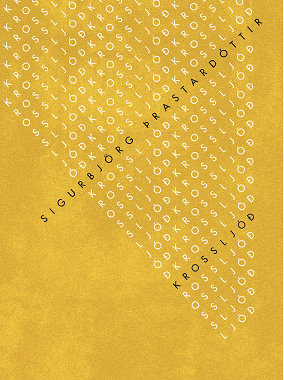
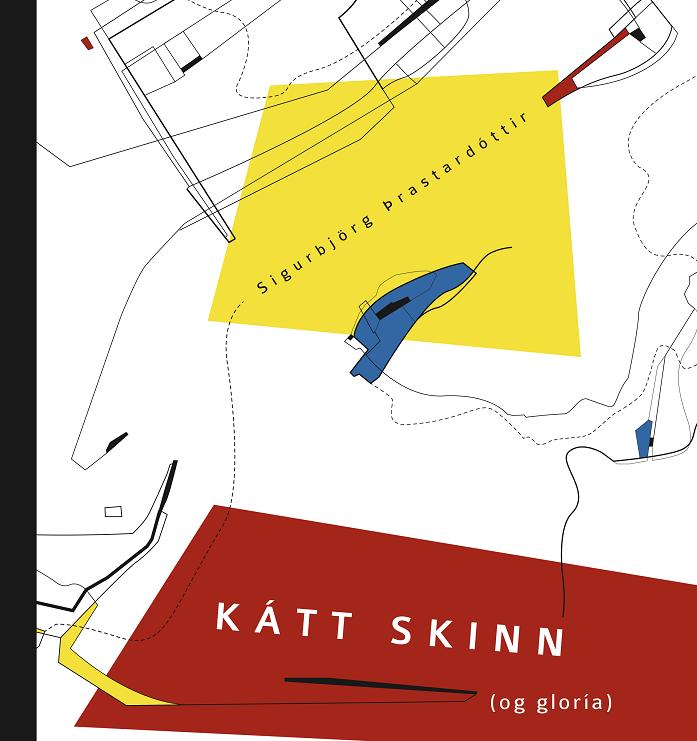
Kátt skinn (og gloría)
Read more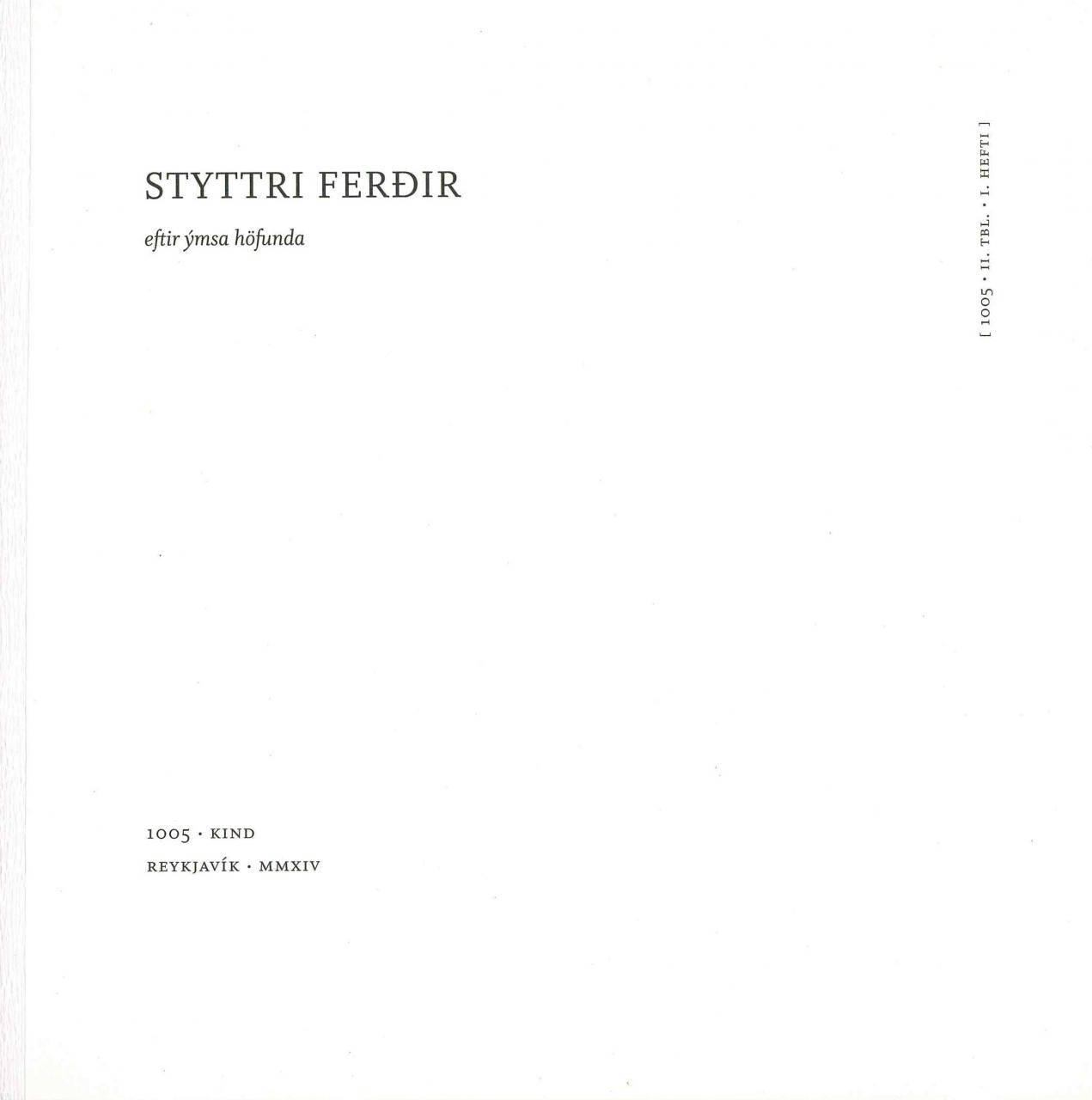
Hestaferð í hundrað og einn (Horseback Riding Downtown)
Read more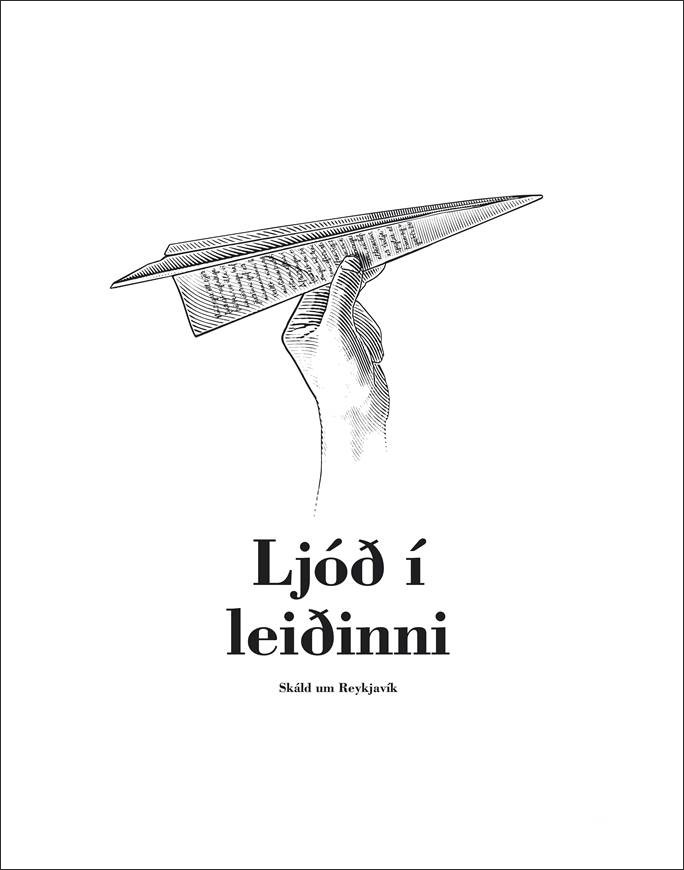
Ljóð í leiðinni: skáld um Reykjavík (Poetry to Go: Poets on Reykjavík)
Read more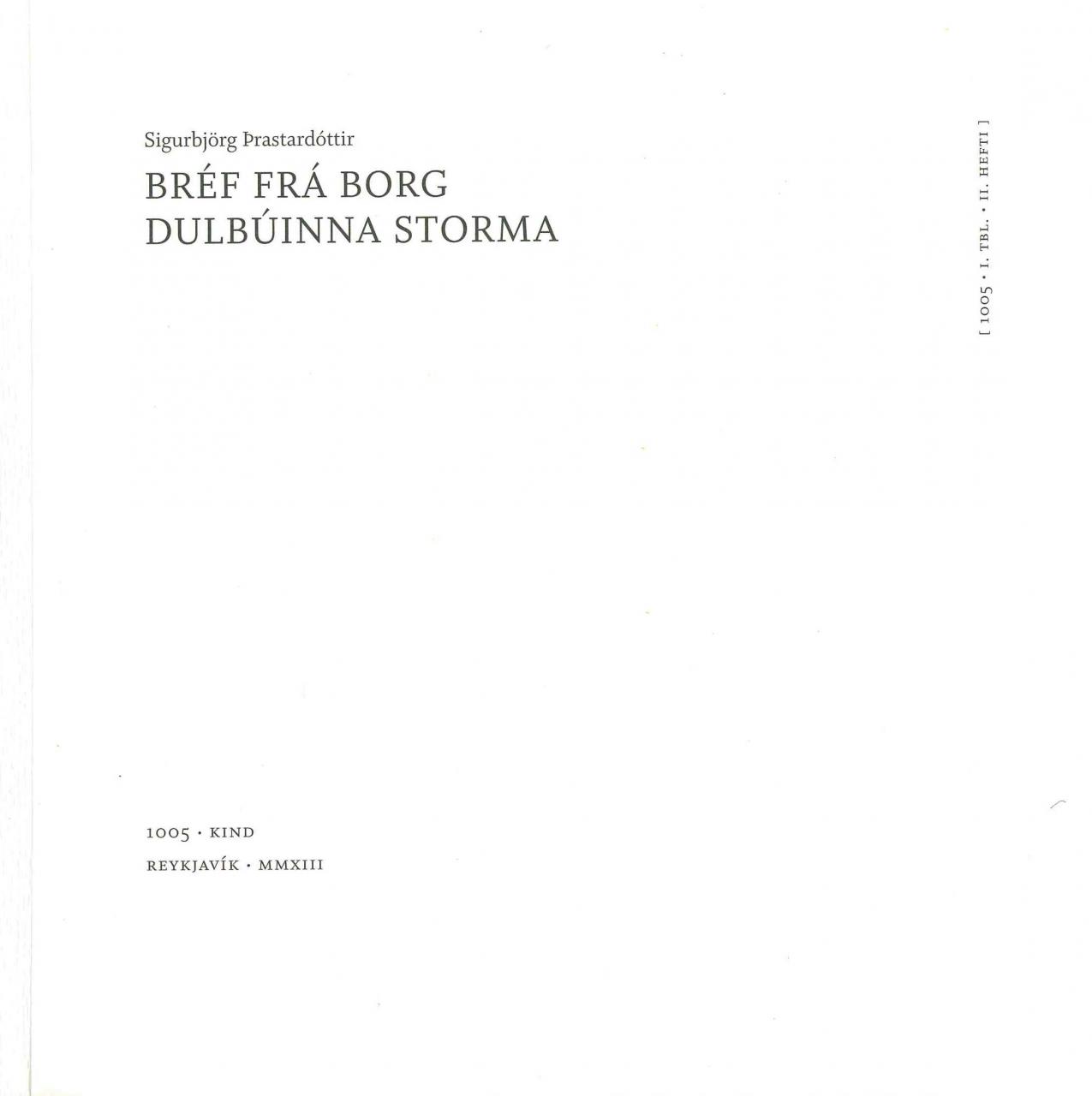
Bréf frá borg dulbúinna storma (Letters From the City of Undercover Storms)
Read more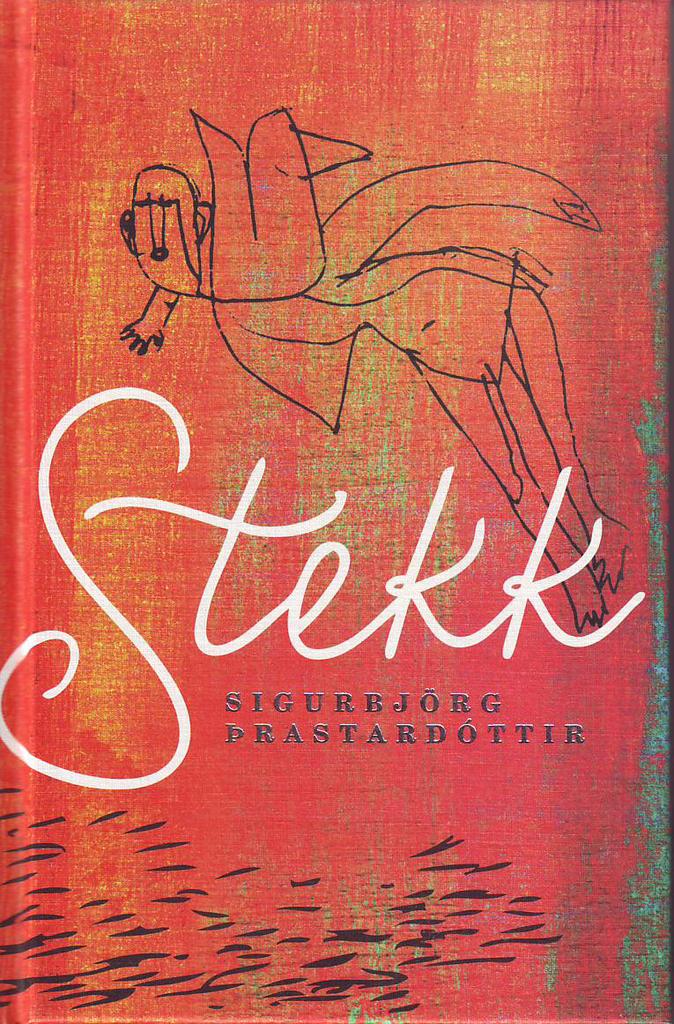
Stekk (Jump)
Read more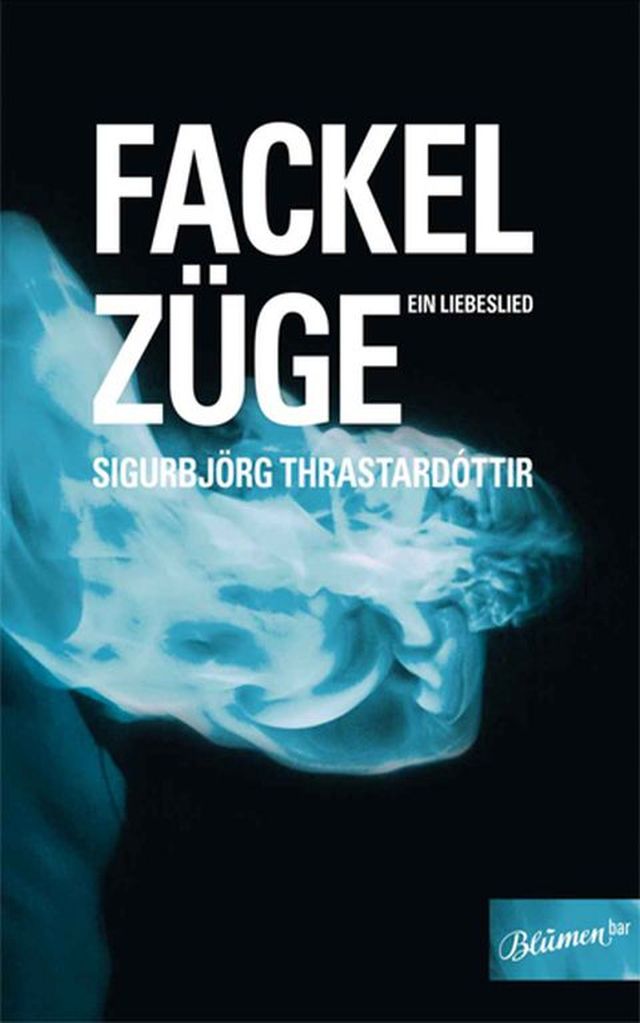
Fackelzüge: Ein Liebeslied
Read morePoems in Neue Lyrik aus Island
Read more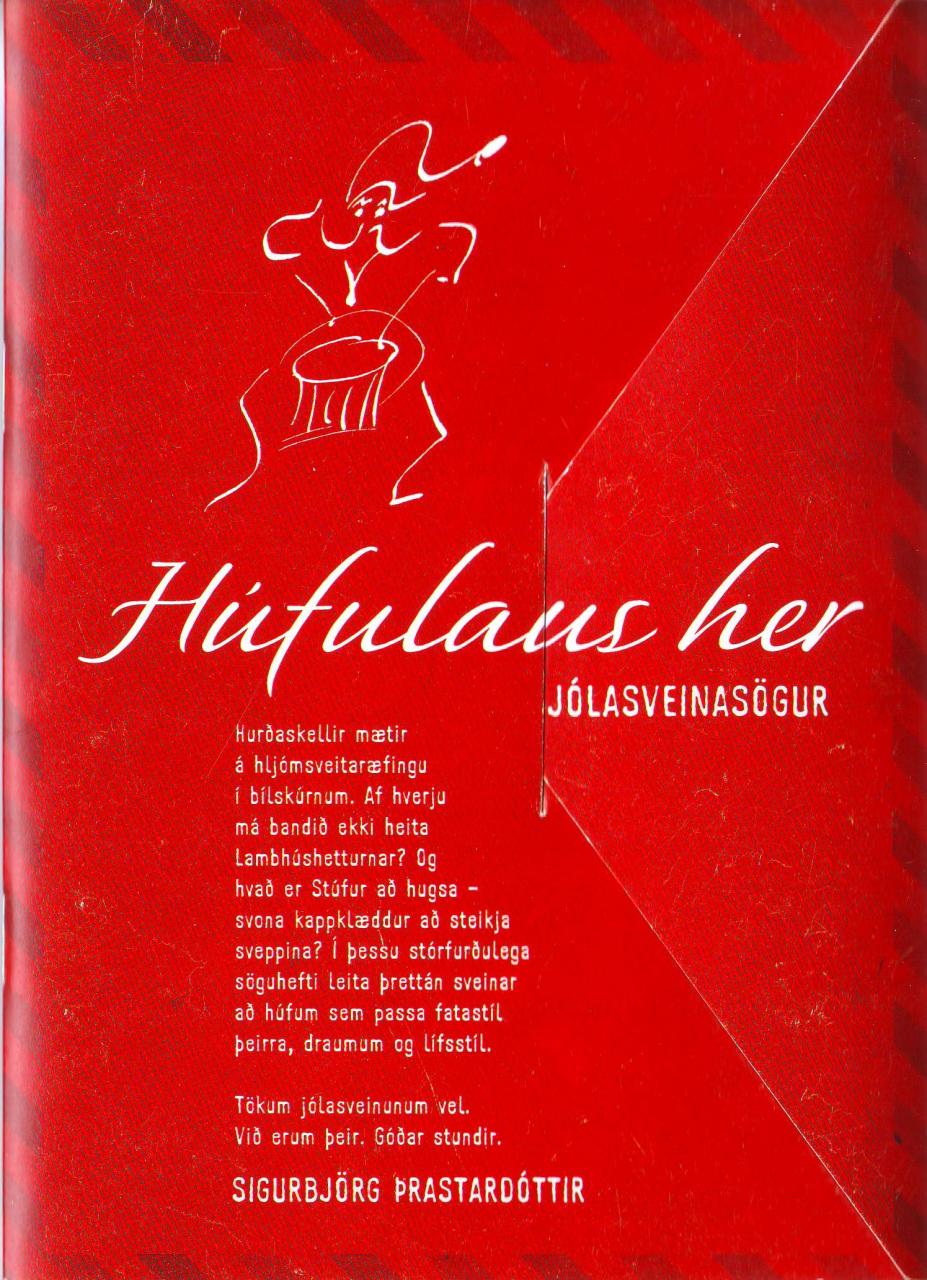
Húfulaus her (A Hatless Army)
Read more
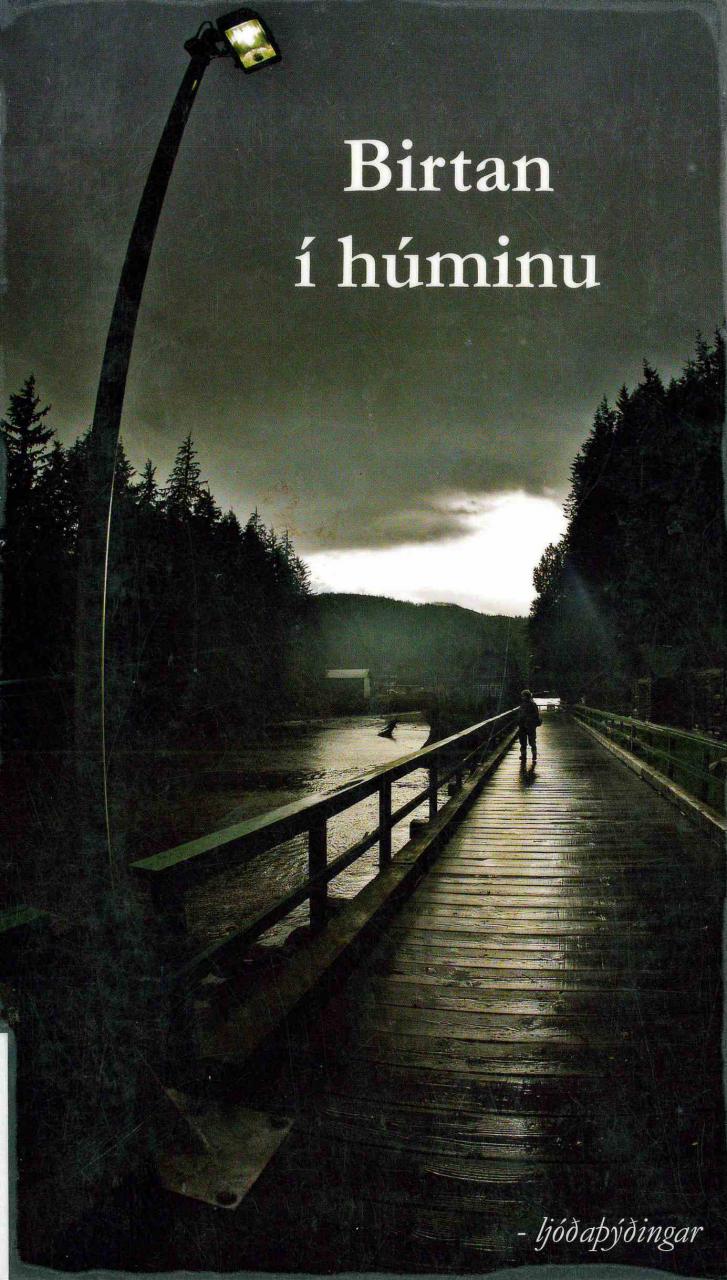
Birtan í húminu (The Light in the Dusk)
Read more
